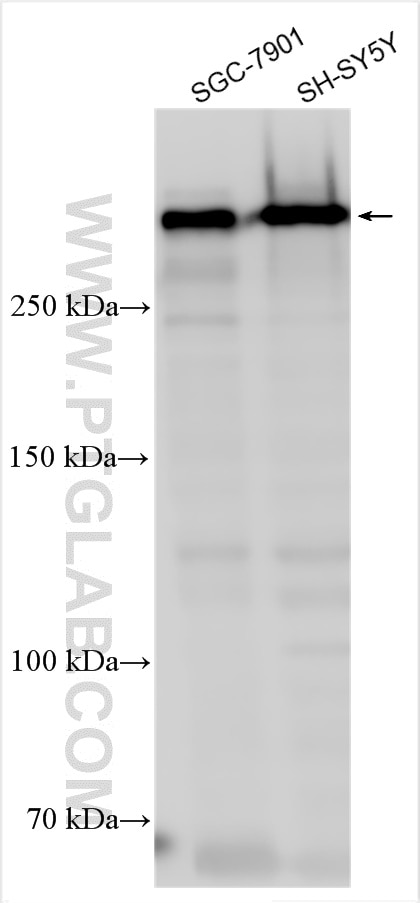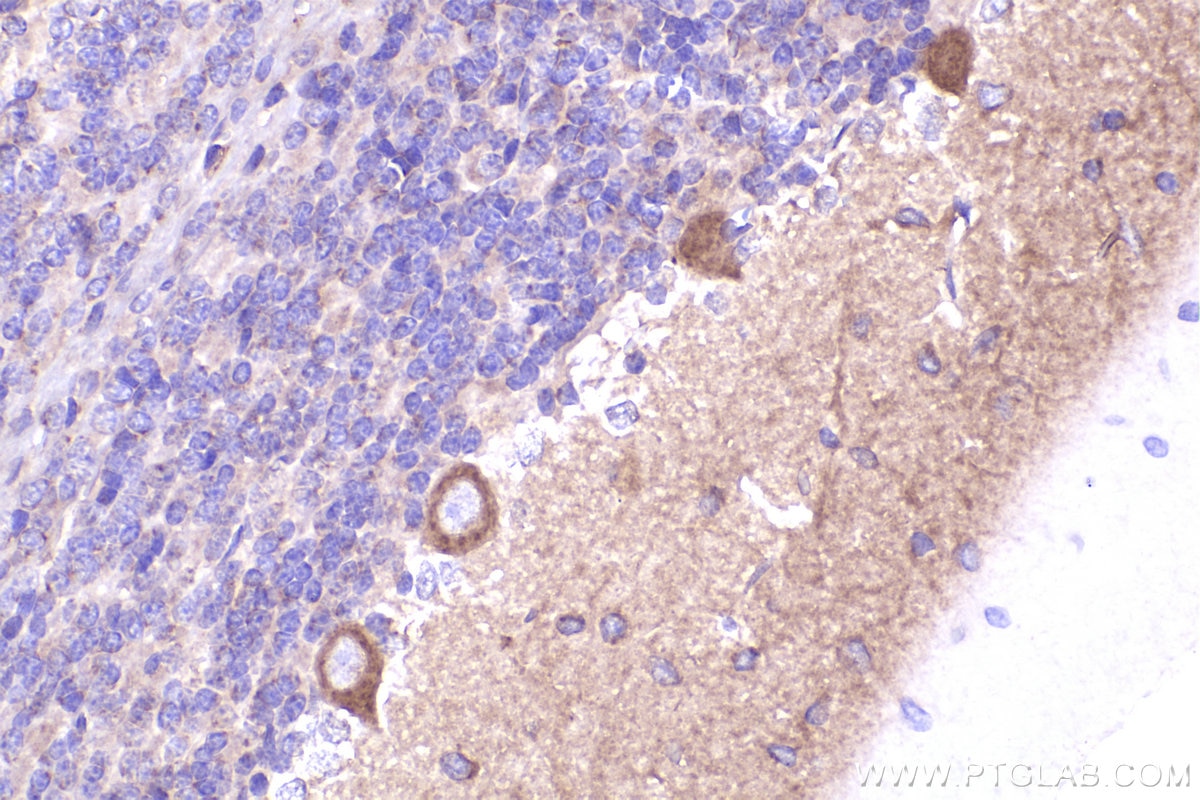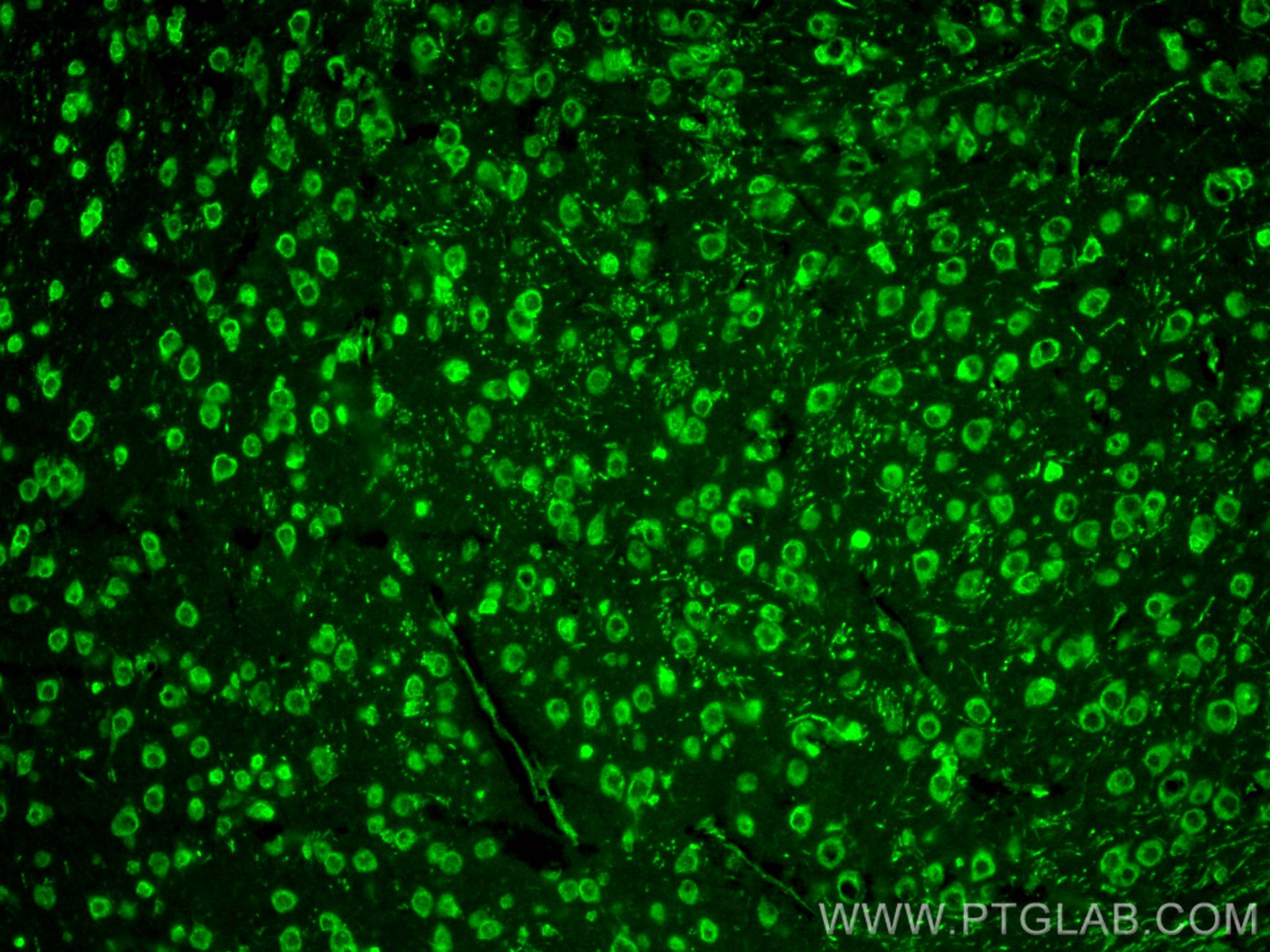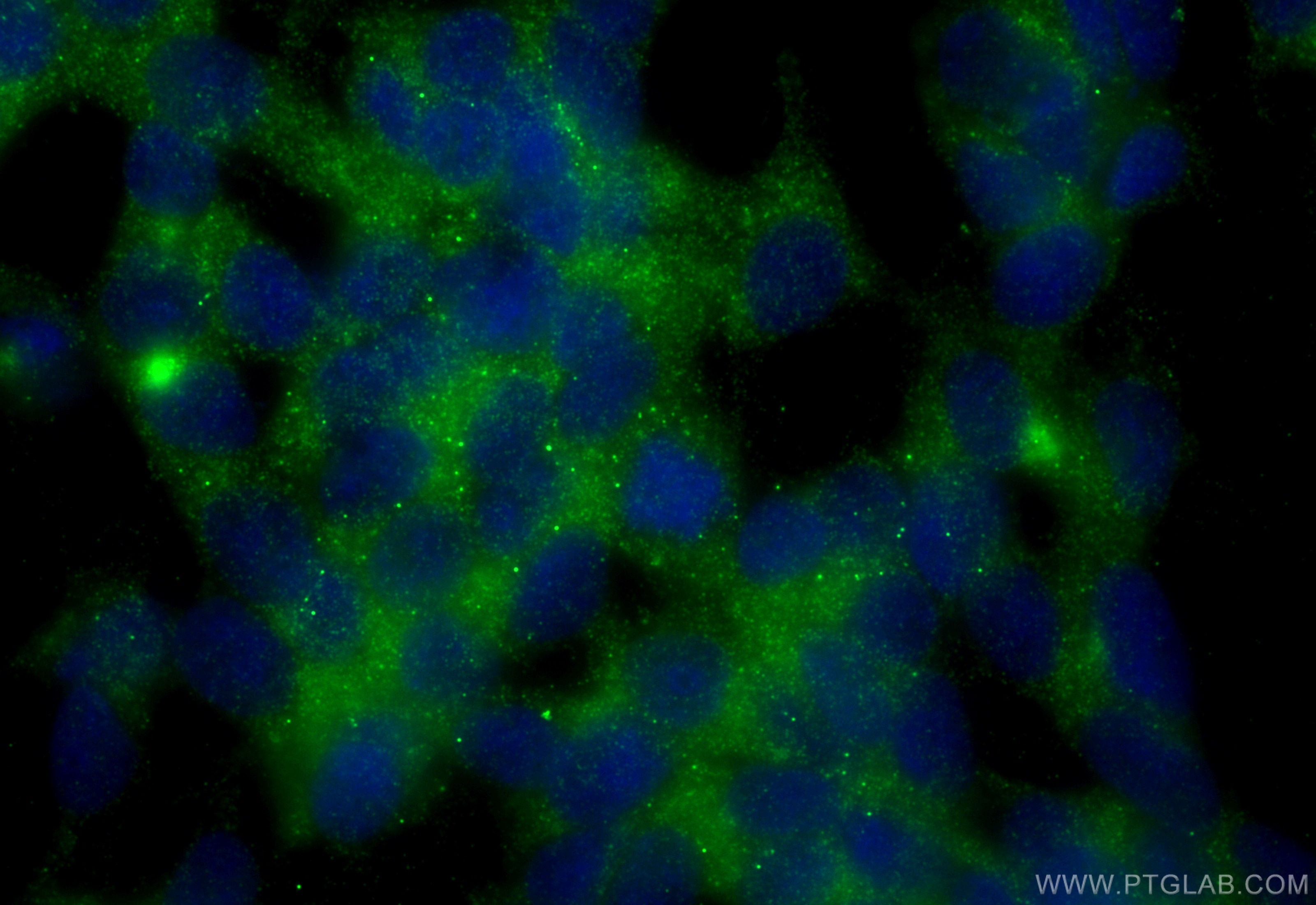Tested Applications
| Positive WB detected in | SGC-7901 cells, SH-SY5Y cells |
| Positive IHC detected in | rat cerebellum tissue Note: suggested antigen retrieval with TE buffer pH 9.0; (*) Alternatively, antigen retrieval may be performed with citrate buffer pH 6.0 |
| Positive IF-P detected in | mouse brain tissue |
| Positive IF/ICC detected in | SH-SY5Y cells |
Recommended dilution
| Application | Dilution |
|---|---|
| Western Blot (WB) | WB : 1:500-1:3000 |
| Immunohistochemistry (IHC) | IHC : 1:250-1:1000 |
| Immunofluorescence (IF)-P | IF-P : 1:50-1:500 |
| Immunofluorescence (IF)/ICC | IF/ICC : 1:200-1:800 |
| It is recommended that this reagent should be titrated in each testing system to obtain optimal results. | |
| Sample-dependent, Check data in validation data gallery. | |
Product Information
30760-1-AP targets Nestin in WB, IHC, IF/ICC, IF-P, ELISA applications and shows reactivity with human samples.
| Tested Reactivity | human |
| Host / Isotype | Rabbit / IgG |
| Class | Polyclonal |
| Type | Antibody |
| Immunogen |
CatNo: Ag29600 Product name: Recombinant human NES protein Source: e coli.-derived, PGEX-4T Tag: GST Domain: 1-276 aa of NM_006617 Sequence: MEGCMGEESFQMWELNRRLEAYLARVKALEEQNELLSAELGGLRAQSADTSWRAHADDELAALRALVDQRWREKHAAEVARDNLAEELEGVAGRCQQLRLARERTTEEVARNRRAVEAEKCARAWLSSQVAELERELEALRVAHEEERVGLNAQAACAPRCPAPPRGPPAPAPEVEELARRLGEAWRGAVRGYQERVAHMETSLGQARERLGRAVQGAREGRLELQQLQAERGGLLERRAALEQRLEGRWQERLRATEKFQLAVEALEQEKQGLQS Predict reactive species |
| Full Name | nestin |
| Calculated Molecular Weight | 177 kDa |
| Observed Molecular Weight | 240-280 kDa |
| GenBank Accession Number | NM_006617 |
| Gene Symbol | Nestin |
| Gene ID (NCBI) | 10763 |
| RRID | AB_3086411 |
| Conjugate | Unconjugated |
| Form | Liquid |
| Purification Method | Antigen affinity purification |
| UNIPROT ID | P48681 |
| Storage Buffer | PBS with 0.02% sodium azide and 50% glycerol, pH 7.3. |
| Storage Conditions | Store at -20°C. Stable for one year after shipment. Aliquoting is unnecessary for -20oC storage. 20ul sizes contain 0.1% BSA. |
Background Information
Nestin, also named as NES and Nbla00170, is a class VI intermediate filament protein expressed in stem cells of the central nervous system (CNS) but not in mature CNS cells. Its expression is used extensively as a marker for neural lineage cells derived from human embryonic stem (hES) and induced pluripotent stem (iPS) cells. Nestin is also expressed in non-neural stem cell populations such as pancreatic islet progenitors and hematopoietic progenitors. Nestin can be detected as 240-280 kDa. Studies point toward nestin heavy posttranslational modifications as possibly serving particular functions in podocytes and in a few other particular cell types(PMID: 17210924).
Protocols
| Product Specific Protocols | |
|---|---|
| IF protocol for Nestin antibody 30760-1-AP | Download protocol |
| IHC protocol for Nestin antibody 30760-1-AP | Download protocol |
| WB protocol for Nestin antibody 30760-1-AP | Download protocol |
| Standard Protocols | |
|---|---|
| Click here to view our Standard Protocols |










